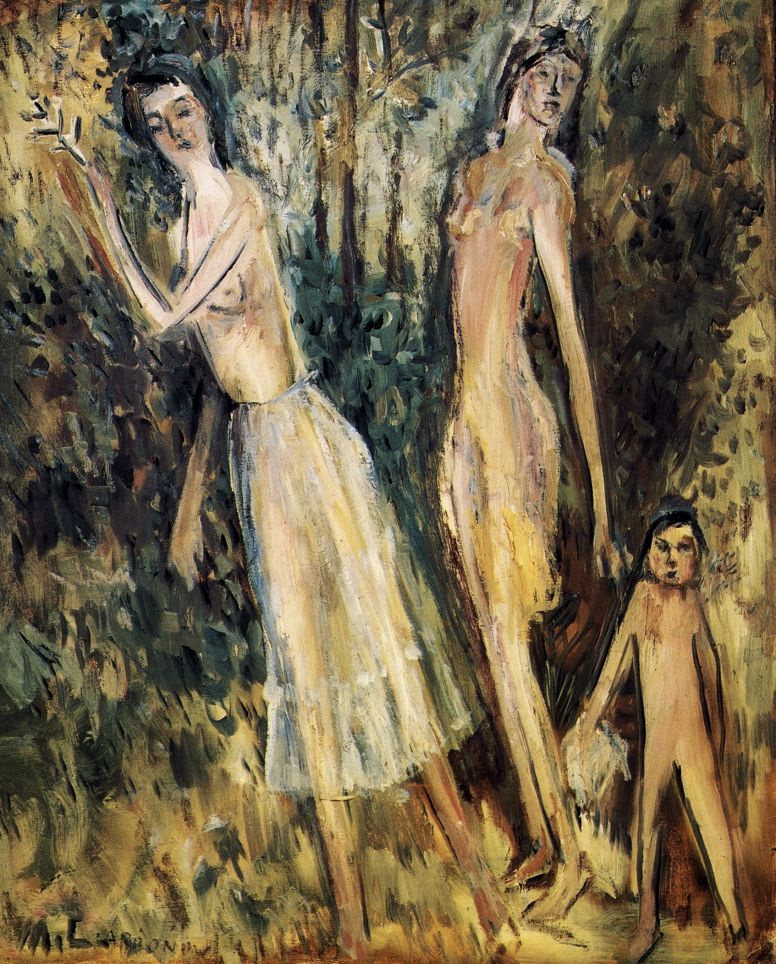log in
Enter site
Login to use Arthive functionality to the maximum
Spring
Mikhail Larionov • Painting, 1920-th
, 81×65 cm
Description of the artwork «Spring»
In 1920, Larionov lived in Paris, and he realized that there was no need to think about returning to Russia. The era of authority denial, outrageousness, scandals and the abolition of depiction for the sake of the rays - the basis of the rayonism he created — were in the past. Having proved to himself and to the world that art can depict not only events or characters, but also abstractions, that it can be non-figurative, Larionov allowed himself to return to figurative painting. However, surprisingly, that was when his paintings have acquired a remarkable ethereality.
In his Spring painting, two women and a child are depicted in the garden. However, the women’s and child’s silhouettes are most likely depicted in the form of a garden. Colours are faded and translucent. Indeed, the Radiant Landscape demonstratively promoting non-objectiveness, is much more material and corporeal than the paintings of this period (for example, Still Life with a Portrait).
Larionov’s late paintings are like afterwords of images. The landscape is like a dream about a landscape, and the naked woman is only a possibility of incarnation in human form. Are these spring women half-naked or they wear sheer dresses? We rather have only a hint of them before us, of the ghostly possibility of these girls’ existence either in the garden or in a dream.
Yuri Annenkov wrote about Larionov’s works of this period: “His nude women are only the initial stage of human forms, only a preface to them; his girls in the garden are only hints of girls in the garden ghosts; random coincidences of strokes look like dresses of some years remembered and forgotten yesterday or the day before yesterday, and the colours are monochrome and colourless, like a dream.”
In Paris, Larionov seriously took up choreographic performances; by the way, the girls’ weightless clothes evoke associations with ballet skirts. Perhaps his passion for ballet left its mark and gave the image such a musicality that turns the viewer into a listener? Perhaps this is the main mystery of the late Larionov.
Written by Aliona Esaulova
In his Spring painting, two women and a child are depicted in the garden. However, the women’s and child’s silhouettes are most likely depicted in the form of a garden. Colours are faded and translucent. Indeed, the Radiant Landscape demonstratively promoting non-objectiveness, is much more material and corporeal than the paintings of this period (for example, Still Life with a Portrait).
Larionov’s late paintings are like afterwords of images. The landscape is like a dream about a landscape, and the naked woman is only a possibility of incarnation in human form. Are these spring women half-naked or they wear sheer dresses? We rather have only a hint of them before us, of the ghostly possibility of these girls’ existence either in the garden or in a dream.
Yuri Annenkov wrote about Larionov’s works of this period: “His nude women are only the initial stage of human forms, only a preface to them; his girls in the garden are only hints of girls in the garden ghosts; random coincidences of strokes look like dresses of some years remembered and forgotten yesterday or the day before yesterday, and the colours are monochrome and colourless, like a dream.”
In Paris, Larionov seriously took up choreographic performances; by the way, the girls’ weightless clothes evoke associations with ballet skirts. Perhaps his passion for ballet left its mark and gave the image such a musicality that turns the viewer into a listener? Perhaps this is the main mystery of the late Larionov.
Written by Aliona Esaulova


